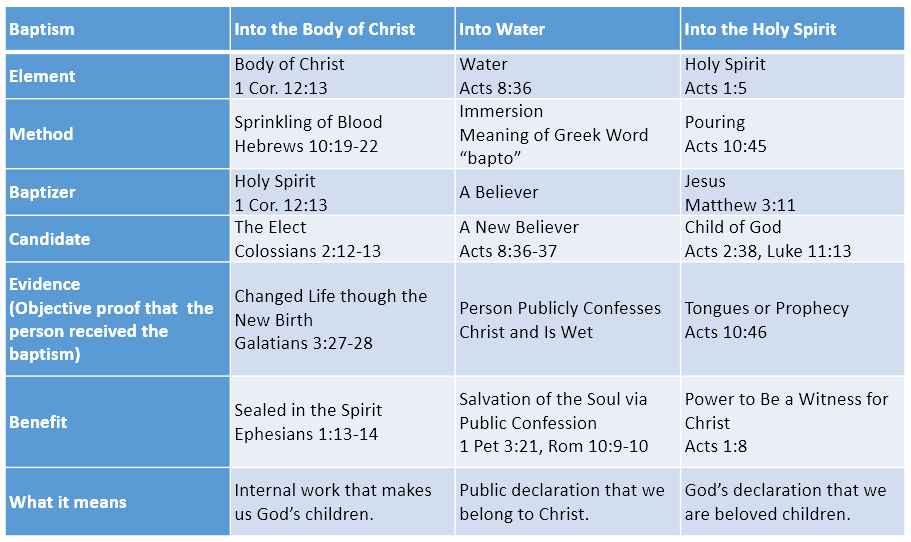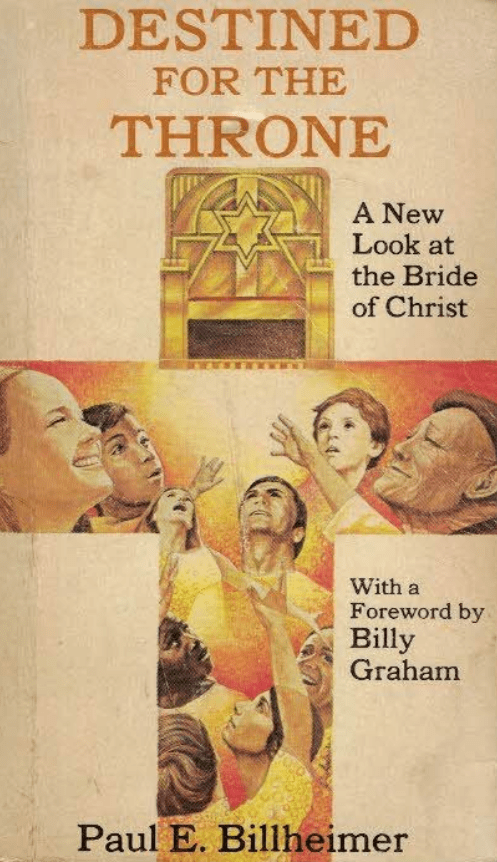Since speaking in tongues is the most common evidence of the baptism in the Spirit and because Paul wrote that he wanted everyone to speak in tongues (1 Corinthians 14:5, where the verb is present-active-indicative and is most naturally translated “want” instead of “wish” – another example of translator’s bias in my opinion), the question arises, “What’s so great about speaking in tongues?”
What Is Speaking in Tongues?
First of all, exactly what is speaking in tongues? Paul wrote to the church in Corinth to inform them about the gifts of the Holy Spirit. He began by telling them that there is no benefit from being ignorant or misinformed.
Now concerning spiritual gifts, brethren, I do not want you to be unaware [ignorant]. 1 Corinthians 12:1 (NASB)
The devil loves ignorance because it gives him a vacuum to fill with his lies to block people from receiving God’s blessings
Fear and false teaching are two of the greatest enemies of truth. Critics of the gifts of the Spirit usually cite examples of their misuse. Abuse of spiritual gifts is certainly problematic, but it is not as bad as having a critical and judgmental spirit. Nor is it as bad as not having the gifts in operation. It is fairly easy to see what is wrong with people, but love enables us to see beyond our failures and foibles so that our potential can be released.
We would never eliminate automobiles because a few people misuse them, sometimes causing great harm. Neither should we shut down spiritual gifts to prevent their possible misuse.
Solomon, in his wisdom, taught that wherever we have work being accomplished, there will be a certain level of messiness.
Without oxen a stable stays clean, but you need a strong ox for a large harvest. Proverbs 14:4 (NLT) —
Graveyards are neat, orderly, and very quiet. Churches are not meant to be. When we assemble, God wants his Spirit to have sway over the congregation. He allows us all to participate, even if we do so quite imperfectly.
We cannot grow to maturity unless we are permitted to make mistakes and learn from them.
Paul wrote to encourage the church to grow in their understanding and use of the gifts.
What is the outcome then, brethren? When you assemble, each one has a psalm, has a teaching, has a revelation, has a tongue, has an interpretation. Let all things be done for edification. 1 Corinthians 14:26 (NASB95) — For you can all prophesy one by one, so that all may learn and all may be exhorted; 1 Corinthians 14:31 (NASB95) — Therefore, my brethren, desire earnestly to prophesy, and do not forbid to speak in tongues. 40 But all things must be done properly and in an orderly manner. 1 Corinthians 14:39–40 (NASB95) —
Doing church this way is asking for a certain level of messiness, as people step out in faith to try to follow the Spirit’s leadership. There is a learning curve in becoming adept at using spiritual gifts. If we are not allowed to try, fail, try again, and succeed, we may never grow.
People usually fear the unknown. Most people know very little about the gifts of the Spirit in general and even less about speaking in tongues. That is a primary reason why some people fear, berate, or ignore this important gift. When Jesus cast the “legion” of demons out of the previously oppressed man, the locals were so scared of Jesus’ power and authority over demons that, rather than inviting him into their city to set more people free, they asked him to leave.
When it comes to the gifts of the Spirit, out of fear and ignorance many people choose to have nothing to do with them, thereby cutting themselves off from a blessing.
There are many benefits that come from speaking in tongues. Paul mentions them in his First Letter to the Corinthians, a church that was notorious for its extraordinary use and misuse of gifts. Those saints were sometimes out of order and immature in how they operated in them, which Paul corrected, but he never discouraged them from using the gifts.
Paul knew that the tremendous benefits coming from spiritual gifts outweigh the potential hazards.
Speaking in tongues has been denigrated by some as the least of the gifts, which is often used as an excuse to ignore and even disparage it. That is most unwise.
How can any gift from God be thought to be less than wonderful and essential?
Jesus died to provide us with God’s grace gifts. We dare not devalue his death and resurrection by spurning what he offers to us in love. We dare not relegate speaking in tongues to any status less than extraordinary, wonderful, and much to be desired. Here are some of the most important benefits.
Undoing Babel
Unity is required for any group to cohere and function properly. Without it, things unravel. With it, nothing is impossible. God commands a blessing when there is godly unity among his children. (Psalm 133:1-3)
There is such a thing as ungodly unity, too. In Genesis 11, sinful rebellious people determined to make a great name for themselves at Babel instead of glorifying and worshiping their Creator God. Recognizing the seriousness of this threat to his benevolent intention for mankind, the Lord confused their language, which disrupted their unity and stopped their work, which resulted in people scattering throughout the earth into separate language groups. (Genesis 11:6-8)
Since then, that part of humanity that resists God’s authority and rule continues its quest to unify and make itself great apart from God, which is what drives the push toward globalism. In the Last Days, Scripture indicates that perhaps God will allow a final unified effort to throw off God’s rule and authority under the leadership of a lawless person called the antichrist who will delude the world through lying signs and wonders into worshiping him and the devil. This spirit has been in the world for a long time providing numerous expressions of the antichrist spirit in tyrannical murderous leaders, but it seems that God will allow one last great example, whom Jesus will destroy. (2 Thessalonians 2:3-12)
This satanically unified world government will be sinful mankind’s last stand against the kingdom of God and will precede the Second Coming of the true Ruler and Unifier, Jesus the Messiah King.
At Babel, God temporarily thwarted man’s sinful self-glorifying unification efforts, but through Christ he is building his own unified kingdom which will crush Satan. (Daniel 7:14)
On the first New Covenant Pentecost, the Holy Spirit gave Christ’s disciples a new heavenly language that all those present understood, even though they were from many different nations and language groups.
Speaking in tongues reversed what happened at Babel.
The Gospel was understood that day by way of a supernatural gift of language that brought unity out of discord, confusion, and rebellion and people into the kingdom of God.
Now there were Jews living in Jerusalem, devout men from every nation under heaven. 6 And when this sound occurred, the crowd came together, and were bewildered because each one of them was hearing them speak in his own language. 7 They were amazed and astonished, saying, "Why, are not all these who are speaking Galileans? 8 "And how is it that we each hear them in our own language to which we were born? Acts 2:5-8 (NASB)
Every time a Spirit-filled believer speaks in tongues, the confusion of Babel is once again undone.
God uses speaking in tongues to unify and empower those who are devoted to him and his kingdom. Speaking in tongues is so important that the devil has resisted its being received and practiced for centuries. That alerts us to the importance of the gift.
A Language from the Holy Spirit
Although every spiritual gift surpasses our intellectual comprehension, speaking in tongues uniquely does.
No one knows exactly how a person is healed by faith or how miracles happen. We simply believe and receive, while the Spirit does the “heavy lifting.” When it comes to speaking in tongues, Paul tells us that the mind is “unfruitful,” that is, it does not run the show at all.
For if I pray in a tongue, my spirit prays, but my mind is unfruitful. 1 Corinthians 14:14 (NASB)
Brain scans of people praying in tongues show that their frontal lobes associated with speech go quiet. Instead, other areas of the brain are activated which seem to receive understanding and revelation from God more easily. (https://www.clintbyars.com/blog/2020/8/3/tongues-rewires-your-brain)
If we have an inherent fear of being “out of control,” we may throw up a roadblock here. We may fear that we will do something “crazy” or evil, if our minds take a back seat. This is a misunderstanding, however.
We do not “blank out” or lose control in any way when we speak in tongues. When we cede control of our speech to the Holy Spirit, we can take it back whenever we wish. This is the only gift that is firmly under the control of our will in the sense that we are free to activate and deactivate its use any time we wish.
…I will pray with the spirit and I will pray with the mind also; I will sing with the spirit and I will sing with the mind also. 1 Corinthians 14:15 (NASB95) —
If we compared speaking in tongues to dancing, we would say the Spirit is leading and we are following. Anyone looking at a dancing couple sees unity of action. The leader and follower are both making choices and acting as independent beings, but the follower is not trying to run the show. That is how it is with the gifts of the Spirit with a unique difference being that the Spirit is unseen. We dance with an invisible partner.
In the garden of Eden, Adam and Eve decided to rely on their own understanding rather than trust in God. Except for those who are born again, this has been the case with mankind ever since and is called sin. Even God’s children struggle with surrender to God in some areas. Learning to walk in step with the Holy Spirit is a large part of our spiritual journey of discipleship. (Galatians 5:25)
The gifts of the Spirit are an invitation for us to relinquish our demand to be in control and completely understand everything.
We learn to trust God to be in charge. (Proverbs 3:5-6)
But a natural man does not accept the things of the Spirit of God, for they are foolishness to him; and he cannot understand them, because they are spiritually appraised. 1 Corinthians 2:14 (NASB)
If our minds are only comfortable running things, we may never be able to accept some of the things of God, least of all the gift of tongues.
Speaking in tongues comes directly from the spirit, bypassing the human mind, which is the perfect antidote for our sinful spiritual pride and independence problem.
The Bible teaches us that, when we speak in tongues, we speak in a real language, just not one we understand.
For one who speaks in a tongue does not speak to men but to God; for no one understands, but in his spirit he speaks mysteries. 1 Corinthians 14:2 (NASB)
However, the Spirit of God understands perfectly.
Praying in the Spirit is not gibberish. Rather, God gives us words that come directly from him with no issues of impure motivation or poor understanding of his will.
Speaking in tongues builds us up spiritually.
We can only give away what we have received. If we are not built up and strong in God’s grace, we will have nothing positive to give away to others.
We minister out of the overflow of God’s grace in our own lives. Speaking in tongues allows us to recharge our spiritual batteries, so to speak.
One who speaks in a tongue edifies himself; but one who prophesies edifies the church. 1 Corinthians 14:4 (NASB) But you, beloved, building yourselves up on your most holy faith, praying in the Holy Spirit, 21 keep yourselves in the love of God, waiting anxiously for the mercy of our Lord Jesus Christ to eternal life. Jude 1:20-21 (NASB)
According to this verse, speaking in tongues builds our faith and keeps us in God’s love. It helps us abide in Christ.
Speaking in tongues helps us to praise God effectively.
When we speak in tongues, we can be sure that we only speak words that glorify God and edify us.
We also know that these words are effective in praising God. Rather than fear that we may say something wrong in tongues, we should trust God as little children and believe what the Scriptures say.
What is the outcome then? I will pray with the spirit and I will pray with the mind also; I will sing with the spirit and I will sing with the mind also. 16 Otherwise if you bless in the spirit only, how will the one who fills the place of the ungifted say the "Amen" at your giving of thanks, since he does not know what you are saying? 17 For you are giving thanks well enough, but the other person is not edified. 1 Corinthians 14:15-17 (NASB)
The main point I want to make here is that, when we speak in tongues, we give thanks well.
The gift of tongues exercised during a church meeting is not the same as the private prayer language we are instructed to put into use each day.
During church meetings, we are to speak in ways to build others up. When we are alone, we can and should pray in tongues to build ourselves up and praise God effectively.
I like to pray in tongues more than in English. I often start in tongues and alternate back and forth. When I was a new believer, I would sometimes feel constrained or limited in my praise to God. It was as if there was a “lid” on my praise. I wanted to express more, but English did not suffice. But when I was baptized in the Spirit and received the personal prayer language of tongues, I never again felt this limitation.
We can pray and sing in the Spirit to God, perfectly expressing worship to the Lord in words that come directly from him.
When we pray in tongues, we pray according to God’s will.
The Bible tells us that when we pray in alignment with God’s will, he hears our prayers and answers them.
This is the confidence which we have before Him, that, if we ask anything according to His will, He hears us. 15 And if we know that He hears us in whatever we ask, we know that we have the requests which we have asked from Him. 1 John 5:14-15 (NASB)
When we are asked to pray for people or situations, we often do not know what God’s specific will is. This is when praying in tongues is extremely useful.
When we pray in the Spirit, we can be sure that we pray exactly in agreement with God’s will, since the words come directly from the Spirit.
In the same way the Spirit also helps our weakness; for we do not know how to pray as we should, but the Spirit Himself intercedes for us with groanings too deep for words; 27 and He who searches the hearts knows what the mind of the Spirit is, because He intercedes for the saints according to the will of God. Romans 8:26-27 (NASB)
I have seen the Lord do some amazing things when praying for people in tongues, including physical and emotional healing and deliverance from demonic oppression. What an amazingly important gift! We cannot properly estimate the value of being able to pray in alignment with God’s will.
Praying in tongues teaches us to trust God.
Since praying in the Spirit does not engage the human intellect, it is counterintuitive to those who have trained themselves to depend mainly on the mind. Faith resides in the heart, in the spirit, and not in the intellect. Obeying God by faith requires us to go beyond the limitations of our intellection and comprehension.
Our minds are wonderful, but they were never meant to replace dependence upon God’s Spirit.
Our minds really cannot keep up with the Spirit or fully comprehend faith, but we can choose to come into alignment. Adam and Eve made the choice to jettison God and his wisdom to gain control over their own decisions and know the difference between good and evil for themselves.
Faith requires us to take our human understanding off the throne and put God back where he belongs.
Trust in the Lord with all your heart And do not lean on your own understanding. Proverbs 3:5 (NASB95) —
Praying in tongues is an exercise in trusting God. It teaches us to rely on the Spirit, listen to his voice, and operate by faith instead of by “sight.”
Praying in tongues opens the door to the other gifts of the Spirit and evangelism.
Speaking in tongues could be called a “gateway” gift because it assists us to learn the ways of the Spirit.
When we take the plunge into allowing the Spirit to speak through us by faith, it opens our hearts to letting the Spirit move in and through us in other ways, too.
I find that when I pray in tongues, God often gives me “words of knowledge,” visions, prophecies, and other insights into how to minister to people. I liken this to tuning into God’s communication frequency, as we formerly did with analog radios. When we turned the tuning dial, the station became clearer as we approached its exact frequency.
When we pray in tongues, we open ourselves to God in the Spirit and can hear him more clearly.
All the gifts are essential if we are going to fish for people the way Jesus did. As we read through the gospels and watch how Jesus interacted with people, we see that most of the time he operated in the gifts of the Spirit. The Spirit was “upon” him to preach, heal, deliver, and whatever else he saw the Father doing. (Luke 4:18)
The Spirit will also be upon us to equip and empower us to minister to people.
Speaking in tongues helps us to transition from being intellectually driven people to being Spirit-led followers of Christ and fishers of men.
To access this entire series, click here.
Want to know more? I have written a book on this very topic, which is available on Amazon. Click here to find out more.





 The baptism into the body of Christ is what happens when we are born again. The Holy Spirit plunges us into Christ, and we become one with him. The evidence is a changed life. Baptism into water by immersion is what another believer does to us, giving us an opportunity to publicly proclaim and acknowledge what God has already done in the Spirit and is our public declaration of allegiance to Jesus. The evidence is that we are wet. Jesus is the One who baptizes us into the Spirit by an outpouring to empower us to be bold witnesses. This outpouring may be likened to standing under a waterfall or a large bucket of water as in the picture above. We are effectively immersed, but its purpose is not identification. Instead, we have the Spirit upon us in power for ministry. The evidence of the baptism in the Spirit is speaking in tongues and prophecy. The Holy Spirit baptism is also God’s declaration to the world that we are his children.
The baptism into the body of Christ is what happens when we are born again. The Holy Spirit plunges us into Christ, and we become one with him. The evidence is a changed life. Baptism into water by immersion is what another believer does to us, giving us an opportunity to publicly proclaim and acknowledge what God has already done in the Spirit and is our public declaration of allegiance to Jesus. The evidence is that we are wet. Jesus is the One who baptizes us into the Spirit by an outpouring to empower us to be bold witnesses. This outpouring may be likened to standing under a waterfall or a large bucket of water as in the picture above. We are effectively immersed, but its purpose is not identification. Instead, we have the Spirit upon us in power for ministry. The evidence of the baptism in the Spirit is speaking in tongues and prophecy. The Holy Spirit baptism is also God’s declaration to the world that we are his children.



 Perhaps it is less obvious why we born again children of God must continue the struggle after Christ’s magnificent resurrection sealed the victory. To get a better understanding of why, we should consider that God’s purpose in redeeming us was to elevate us to his throne as his mature sons (and daughters) to allow us to share in his glory.
Perhaps it is less obvious why we born again children of God must continue the struggle after Christ’s magnificent resurrection sealed the victory. To get a better understanding of why, we should consider that God’s purpose in redeeming us was to elevate us to his throne as his mature sons (and daughters) to allow us to share in his glory.
